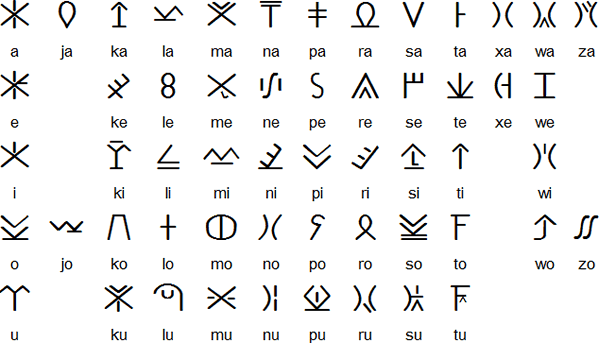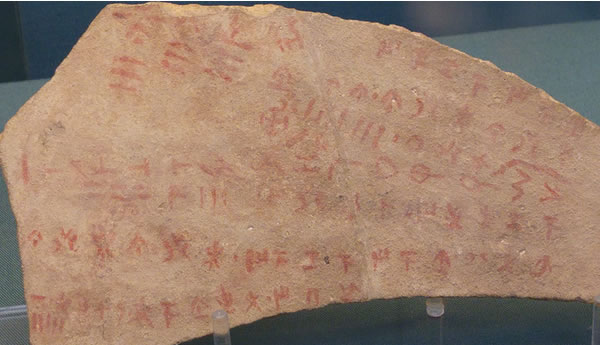The Cypriot syllabary was used in Cyprus from about 1500 and 300 BC and is thought to have developed from the Linear A. The earliest known inscriptions from between 1500 and 1200 BC are in an unknown language called 'Eteo-Cypriot', or 'True Cypriot', and the script in which they are written is called Cypro-Minoan.
From around 1200 BC Cyprus began to be colonised by Mycenaean, Minoan and possibly Cretan Greek settlers, and they probably adapted the existing script to write their own language - the oldest known inscription in Greek dates from the 11th century BC. Cypriot Greek had much in common with Greek dialects of Arcadia and Pamphylia, which corresponds to the province of Antalya in Turkey.
Most early inscriptions were short texts and dedications on funerary objects, though some longer texts appeared during the 5th century BC. Some later inscriptions, particulary those from Paphus and Soli, are in the Cypriot script and in the Greek alphabet which helped with their decipherment. As a result of Alexander the Great's programme of Hellinization the Cypriot script was eventually replaced by the Greek alphabet during the 4th century BC.
The decipherment was started in 1871 by George Smith, who was later assisted by S. Birth, and was initially based on a bilingual Phoenician-Cypriot text on a bronze tablet from Idalium and dating from 480-470 BC. Other scholars, including Brandis, M. Schmidt, Deecke and Siegismund also worked on the decipherment, which was complete by 1876.


Photo by Simon Ager, taken in the British Museum.
Information about the Cypriot syllabary
http://en.wikipedia.org/wiki/Cypriot_syllabary
http://histories.cambridge.org/extract?id=chol9780521234474_CHOL9780521234474A005
http://www.palaeolexicon.com/default.aspx?static=14&Language_ID=31
http://www.unicode.org/L2/L2020/20154-n5135-cyprominoan.pdf
Palaeolexicon - a word study tool for ancient languages, including Cypriot
http://www.palaeolexicon.com
ALPHABETUM - a Unicode font
for ancient scripts, including Classical & Medieval Latin, Ancient Greek, Etruscan, Oscan, Umbrian, Faliscan, Messapic, Picene, Iberian, Celtiberian, Gothic, Runic, Old & Middle English, Hebrew, Sanskrit, Old Nordic, Ogham, Kharosthi, Glagolitic, Anatolian scripts, Phoenician, Brahmi, Imperial Aramaic, Old Turkic, Old Permic, Ugaritic, Linear B, Phaistos Disc, Meroitic, Coptic, Cypriot and Avestan.
https://www.typofonts.com/alphabetum.html
Afaka, Bamum, Caroline Island Script, Celtiberian, Cherokee, Cypriot, Dunging (Iban), Eskayan, Hiragana, Iberian, Katakana, Kpelle, Loma, Mende (Kikakui), Mwangwego, Nüshu, Nwagụ Aneke, Vai, Yi, Yugtun
Page last modified: 15.03.23
[top]
You can support this site by Buying Me A Coffee, and if you like what you see on this page, you can use the buttons below to share it with people you know.

If you like this site and find it useful, you can support it by making a donation via PayPal or Patreon, or by contributing in other ways. Omniglot is how I make my living.
Note: all links on this site to Amazon.com, Amazon.co.uk
and Amazon.fr
are affiliate links. This means I earn a commission if you click on any of them and buy something. So by clicking on these links you can help to support this site.
[top]